| Teotihuacán is the
most important archaeological site of the classical perd in Middle
America. It was a city of over 120,000 people which was in use from about
150BC until about 800AD. They were the Toltecs and preceeded the Aztecs.
The name in the Nahuatl language means the place where men become gods. Most
of the signs are in Spanish, Nahuatl and English. Nahuatl is still spoken in
parts of Mexico today along with about 200 other native languages.
We took a combi bus from the campsite to the pyramids
which actually dropped us at a gate on the opposite side of what is a huge
site (almost 2 square miles).
So the first bit we came to was an outpost of the main site, an
archaeological dig called Tepantitla. This was a housing complex for leading
members of the society and priests. One of the most interesting bits here is
the insertion of small bits of stone in the mortar joins. We actually found
this in a lot of the stonework. | 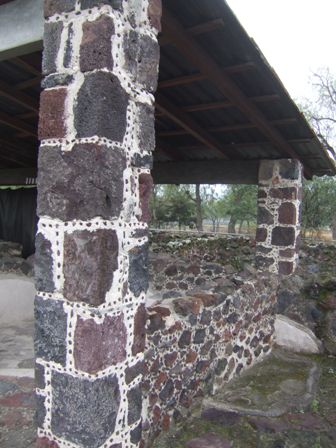 |
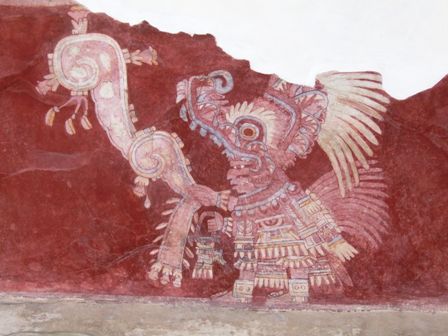 |
Whilst bits of the walls remain, the roofs have long gone, but some rooms
have been covered over with tin sheets to protect the remains of the wall
friezes. These have figures with amazing headdresses in oft repeated
patterns. This is part of the Tláloc Roja mural |
| There are different patterns but mostly in red and
blue. The red tint is characteristic of the site and is still remarkably
bright. Tláloc was a water god. | 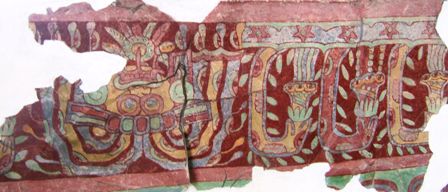 |
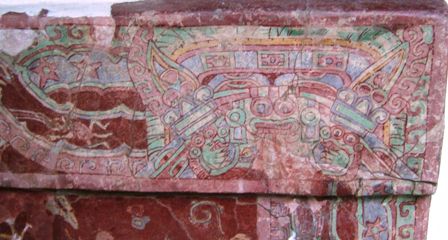 |
In some cases only part of the frieze remains , in others the sections were
a little larger. None of the remains of the friezes has been restored, the
only restoration work has been to protect and support the original pieces. |
| From this section we had to walk quite a long way the
reach the main entrance and the museum which is where the guide books advise
you to start. This weird looking pot dates from the early period, about
150BC. | 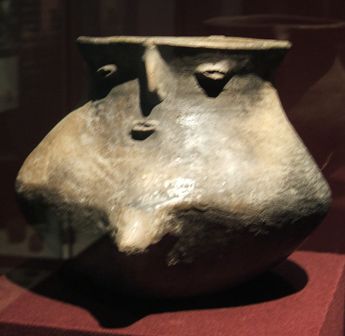 |
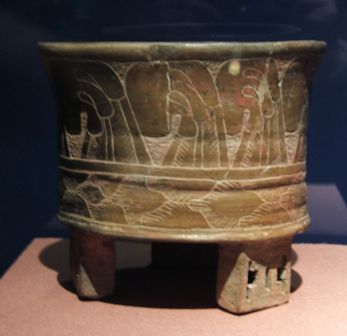 |
This is from the Tlamimilopa phase (about 250-450AD). |
| Social position was very important and the more
sophisticated the headdress, the higher the social standing. These three
models show a range of headdresses. | 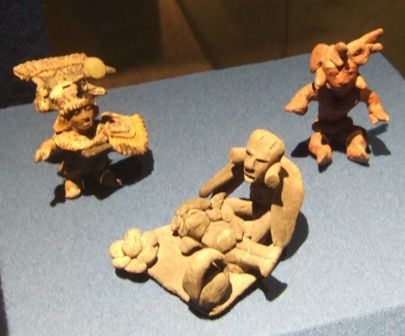 |
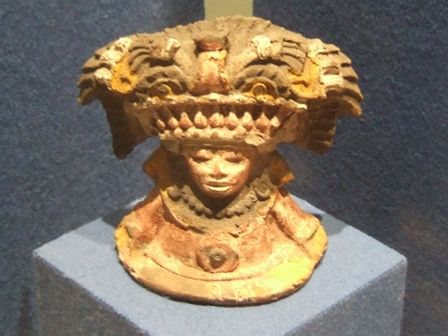 |
The multiple colours and rich plumage in the headdress indicate a person of
high standing.. |
| This doll with moving limbs is from the Xolalpan phase
(450-650AD) It is a piece with high ritual symbolism. The period is when the
influence of the culture was at its greatest. | 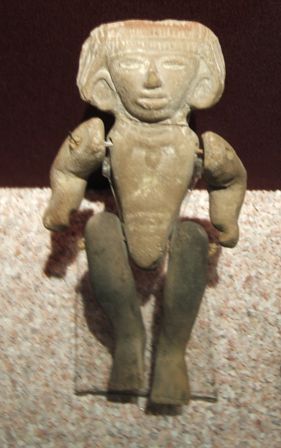 |
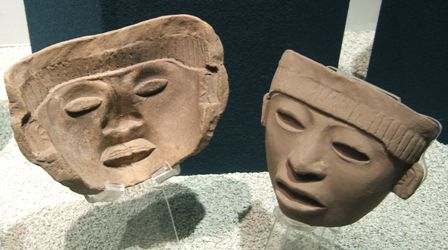 |
They were very skilled at making moulds and castings, particularly for
masks. |
| This is a highly volcanic area and obsidian was
plentiful. It was used for tools, particularly arrowheads, scrapers and
knives where a sharp edge was required, and also for other ornamental items. | 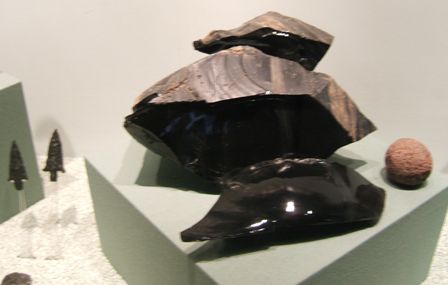 |
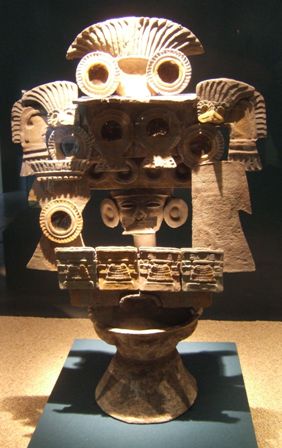 |
This is an incense brazier for ceremonial use in domestic and ritual areas.
The decorations represent flowers butterflies and shields around a central
mask. There were many of these on display. |
| There is also a scale model of the whole site. This is
a view looking northeast over the top of the Pyramid of the Sun towards the
Pyramid of the Moon.. | 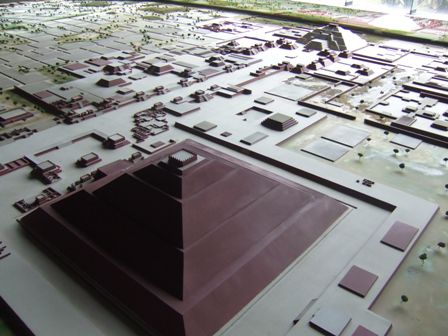 |
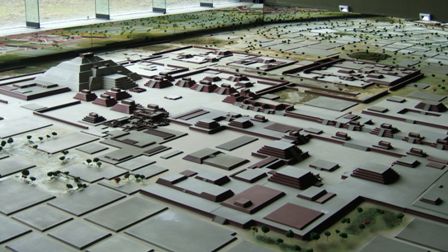 |
Another view this time looking north west. |
|
And the Pyramid of the sun looking west. | 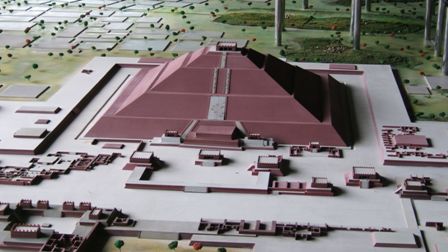 |
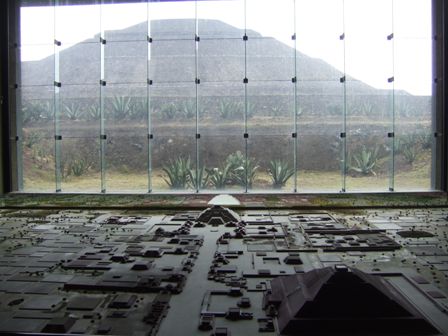 |
The view out the window is of the Pyramid of the Sun to the north of the
museum. |
| The Mexicans are fascinated by the cult of the dead.
Perhaps this originated with these ancient native peoples, some of whom
sacrificed thousands to their gods, and to whom becoming such a sacrifice
was an enormous honour. It certainly dates back to before the Spaniards
introduced Christianity. | 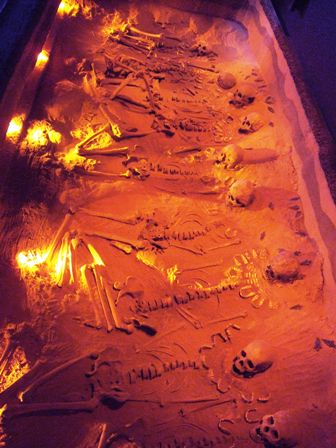 |
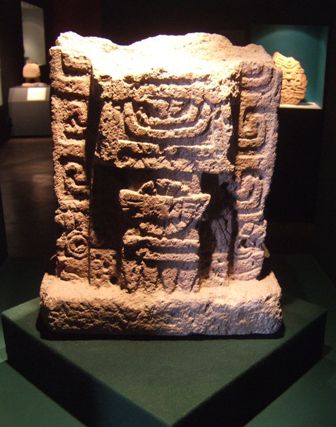 |
The museum has a lot of pieces of carved stones which would have originally
ornamented buildings. |
| They also have a number of animal heads. Animals also
feature frequently in the murals. | 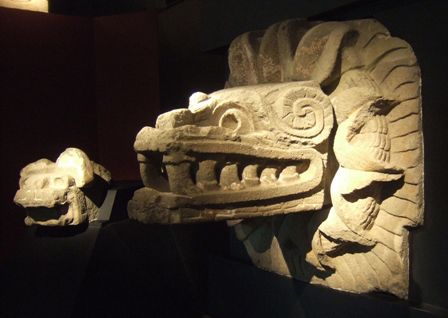 |
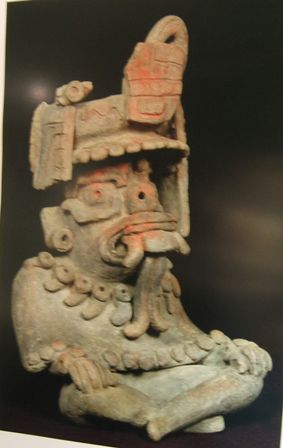 |
There is another smaller museum which we looked at briefly on our way out.
This is more artistic in nature - if you can call this art! |
| Although the pots have more recognisable patterns. I
think this must be from a later period. | 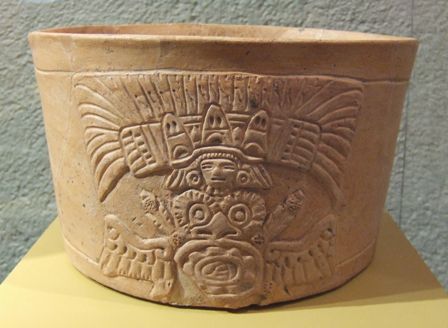 |
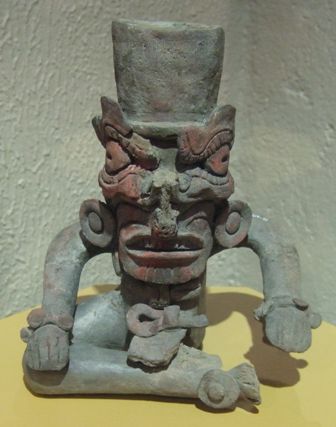 |
And this is just plain ugly! |
|